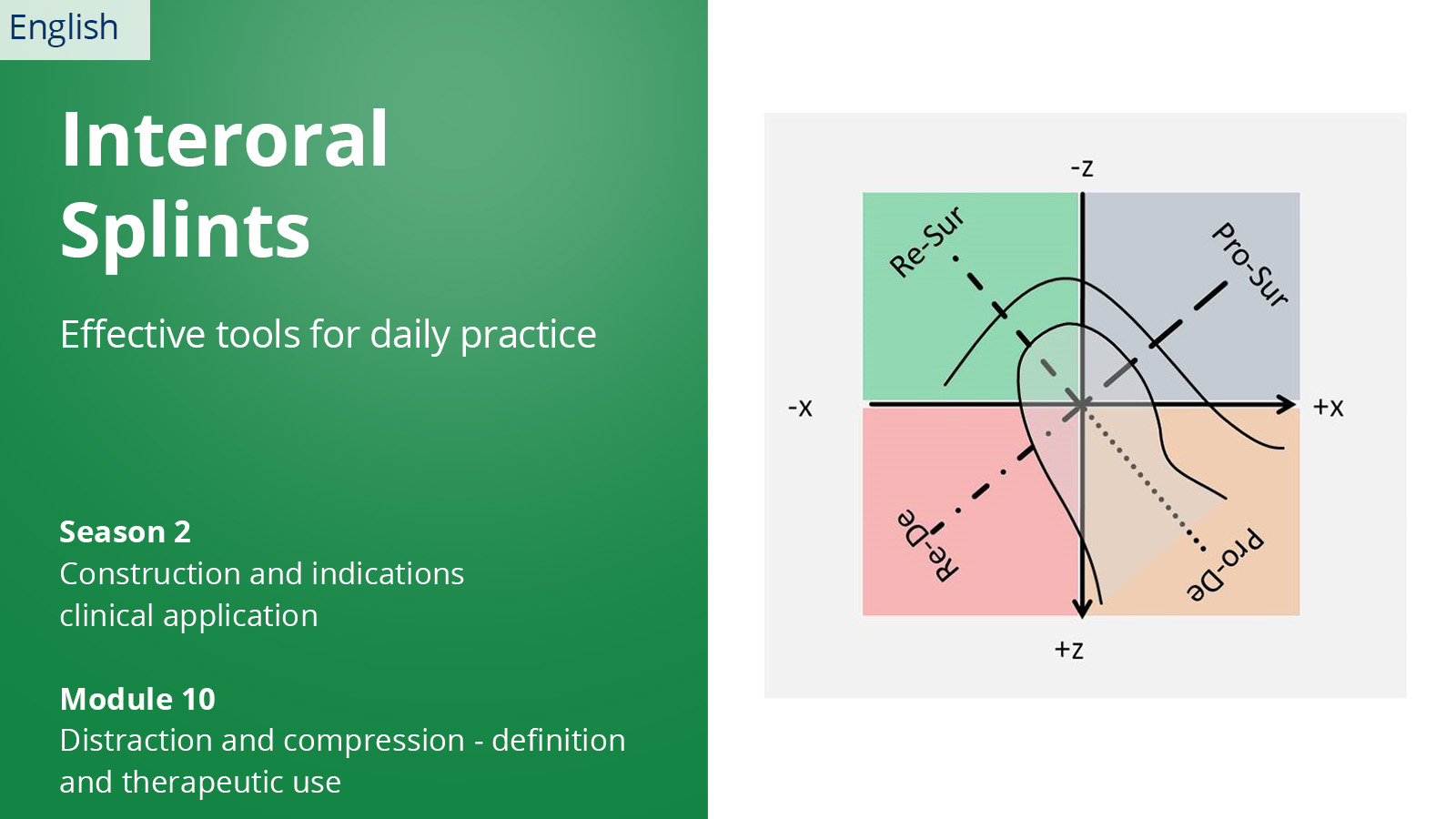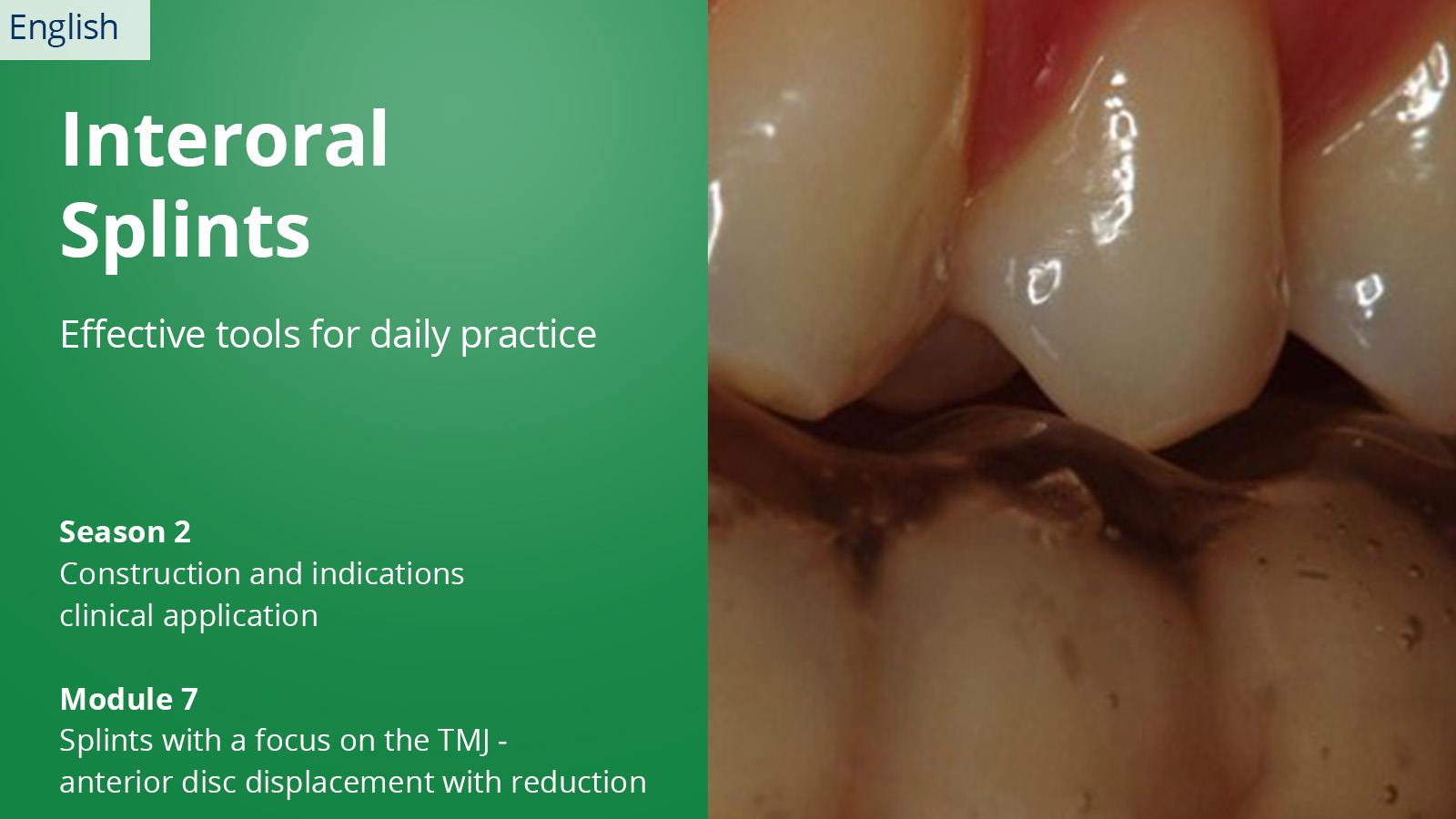
In this module, you will learn how you can use the so-called walking back method to work out the therapeutic position based on the findings obtained during splint therapy and how you can make the transition to the subsequent necessary therapeutic measures in a targeted and safe manner.

This module deals with special splints such as placebo splints and what effects flat splints can have on the position of the lower jaw without any front canine guidance. Get to know the difference in the effectiveness of arbitrarily or kinematically manufactured splints.
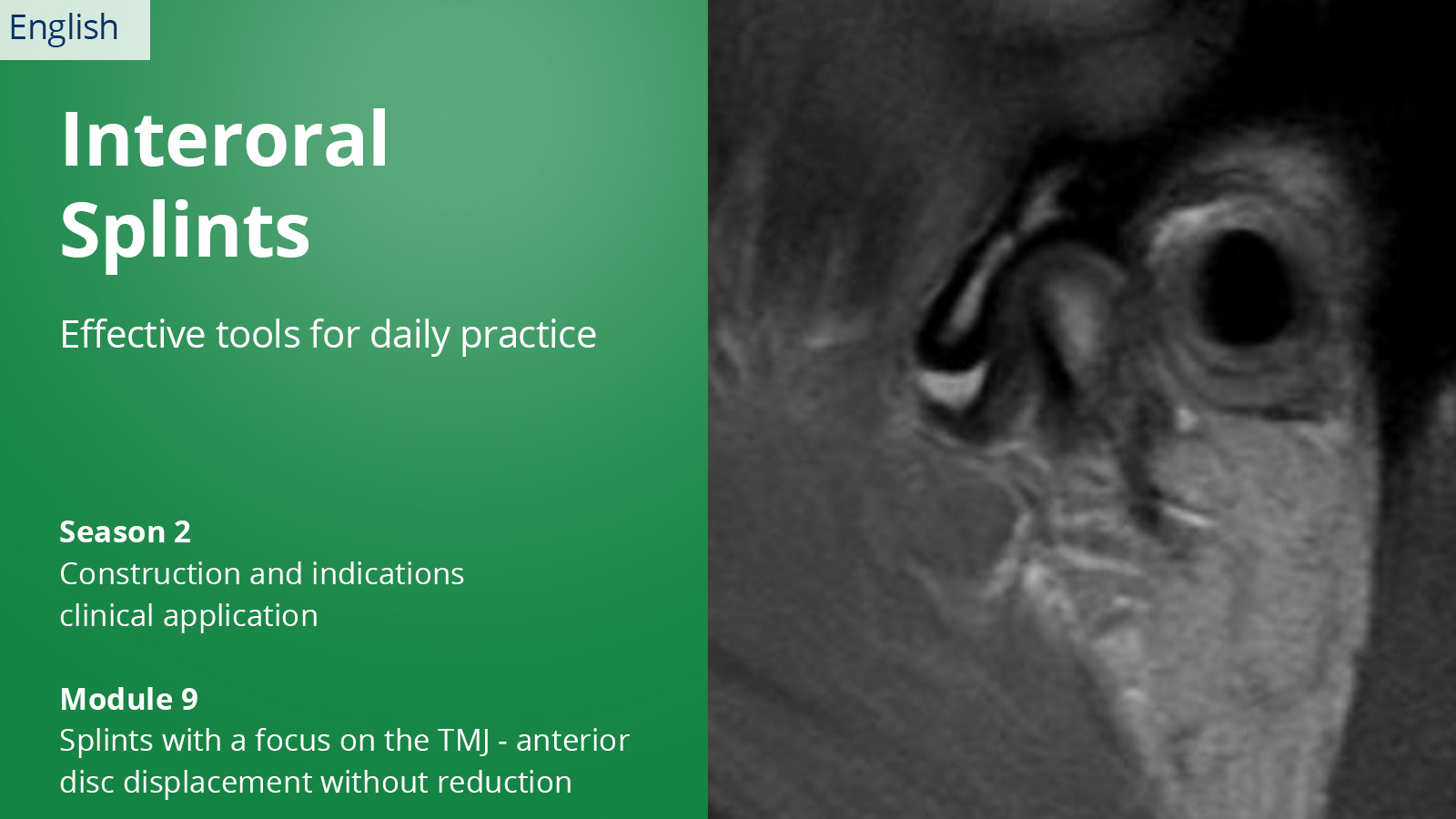
In this module, you will learn how to proceed with an anterior disk displacement without reduction, which condylographic signals are to be expected with a permanently displaced disk and which therapeutic strategy is to be adopted in such situations.
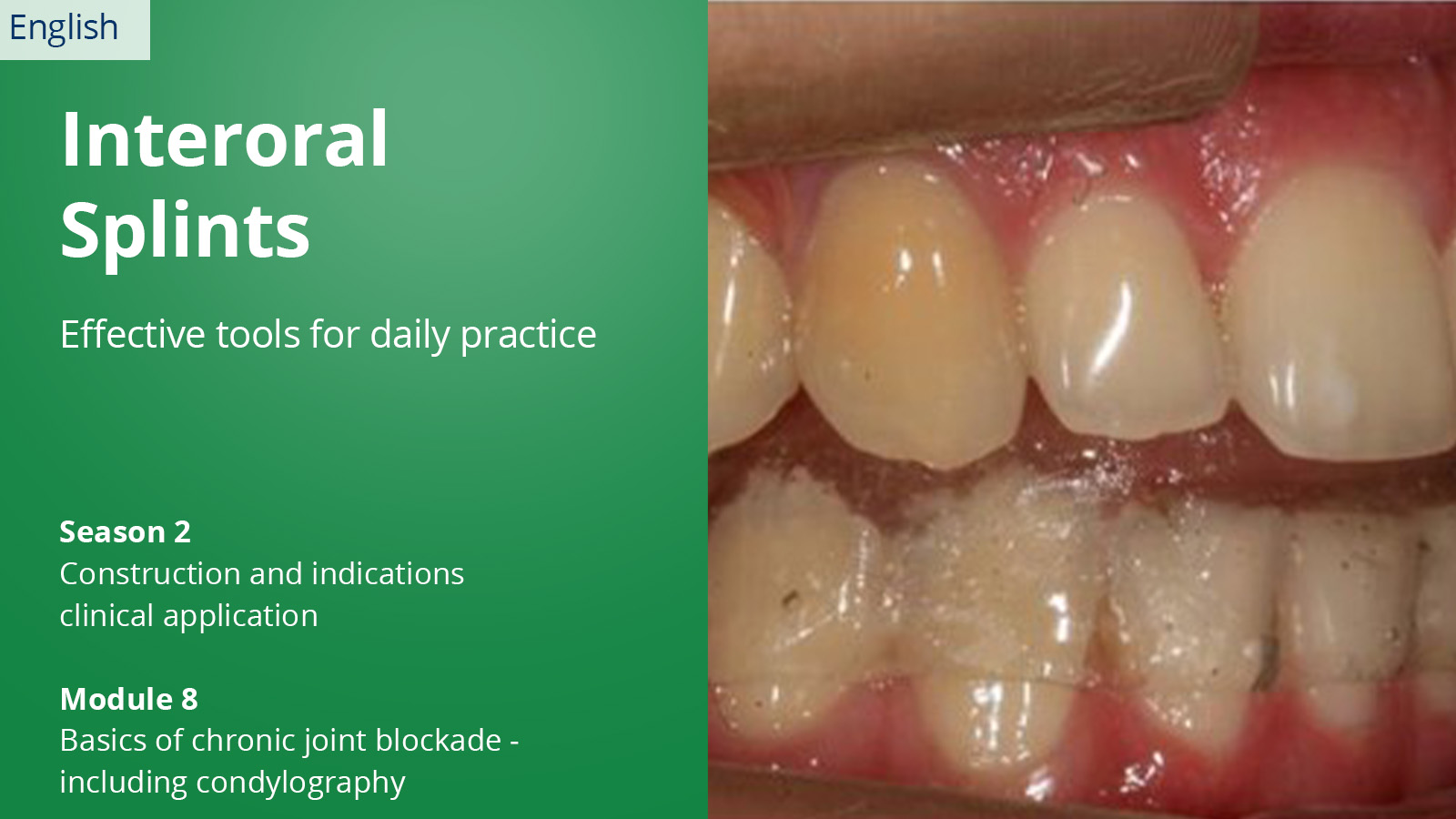
In this module, learn about the risks of progression to destructive joint changes associated with disc displacement. We also go into the differential diagnosis of anterior disc displacement without realignment versus muscular splinting using a case study.
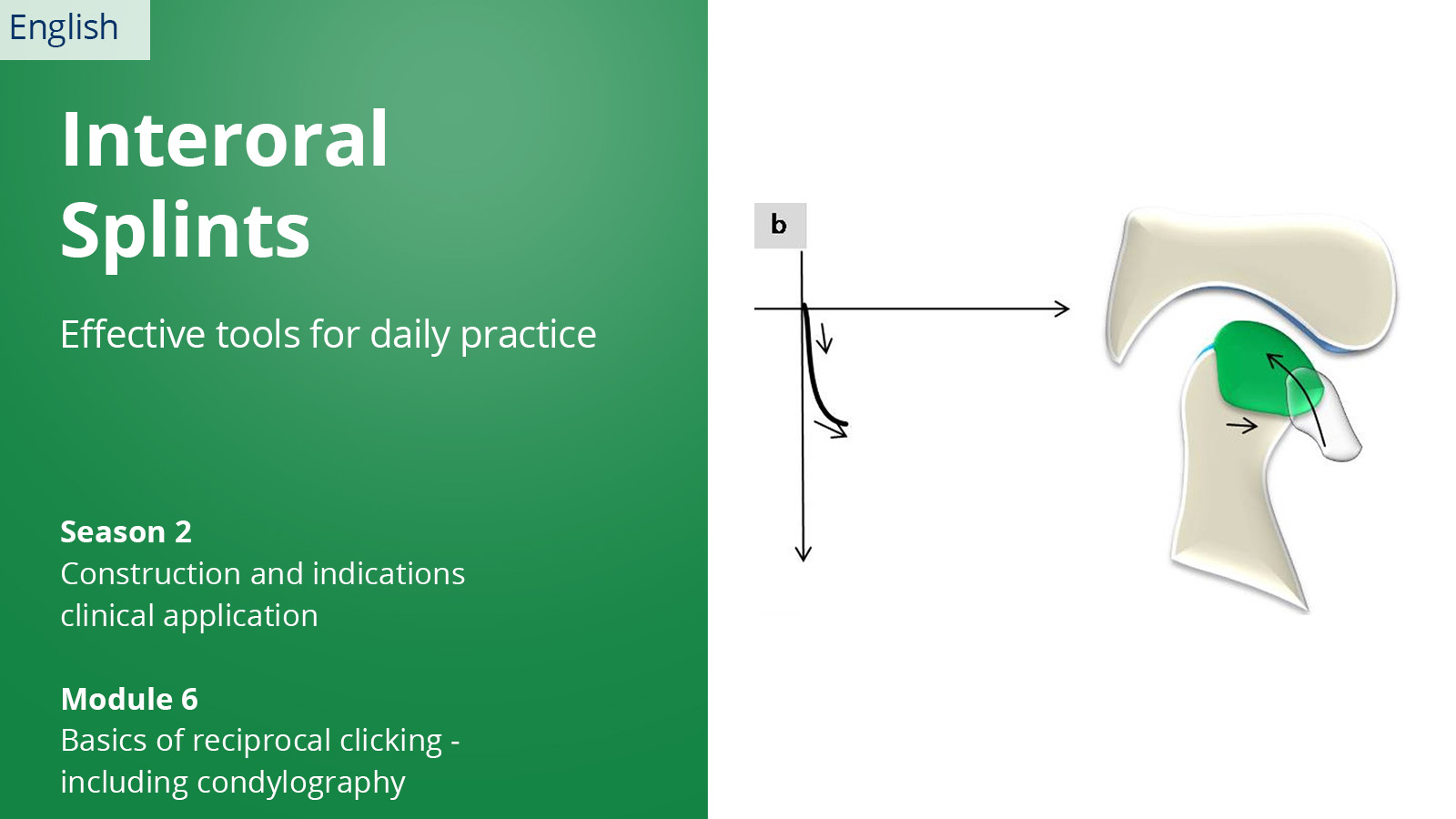
In this module, you will learn what reciprocal clicking is all about, the consequences of such an internal derangement of the temporomandibular joint and how the decision-making process regarding the exact splint position works on the basis of condylography.
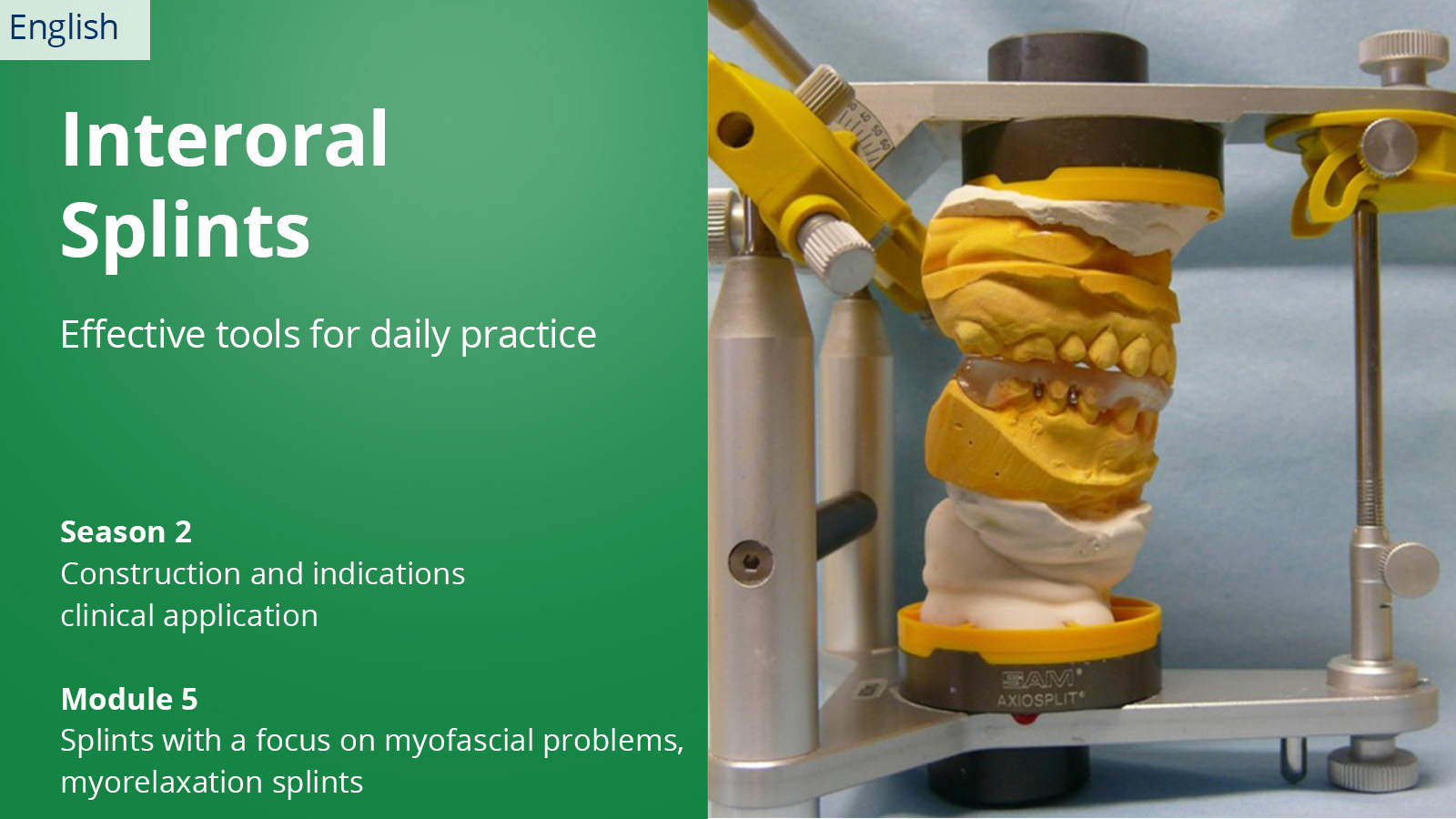
In this module we will show you the importance of an exact and systematic assessment, show how a myorelaxation splint improves myofascial problems and present a case study.
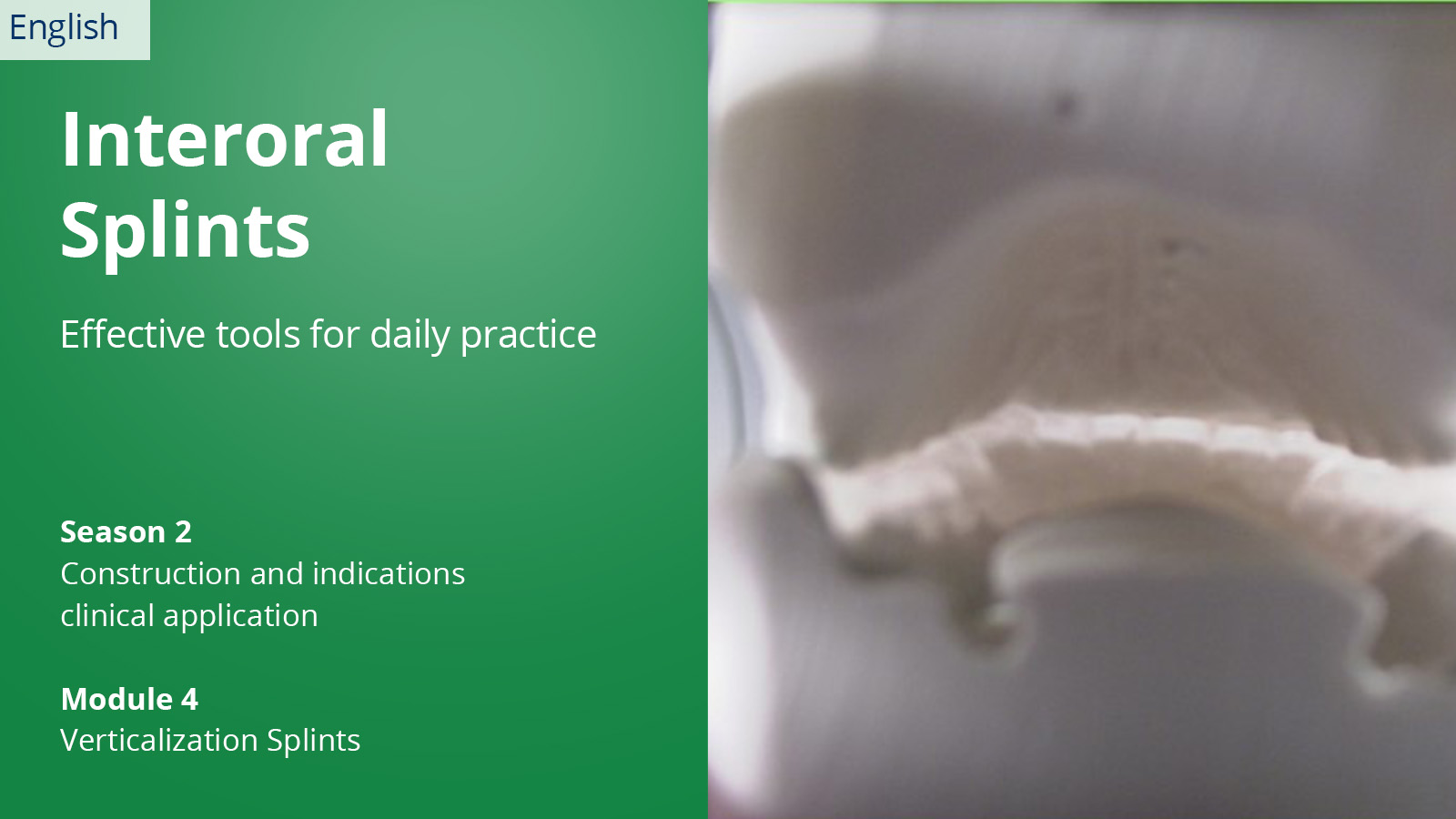
In this module we address the vertical dimension of occlusion and the importance of lower facial height as an element of every splint treatment and describe the use of sandwich splints. A verticalization strategy case study rounds off this module.
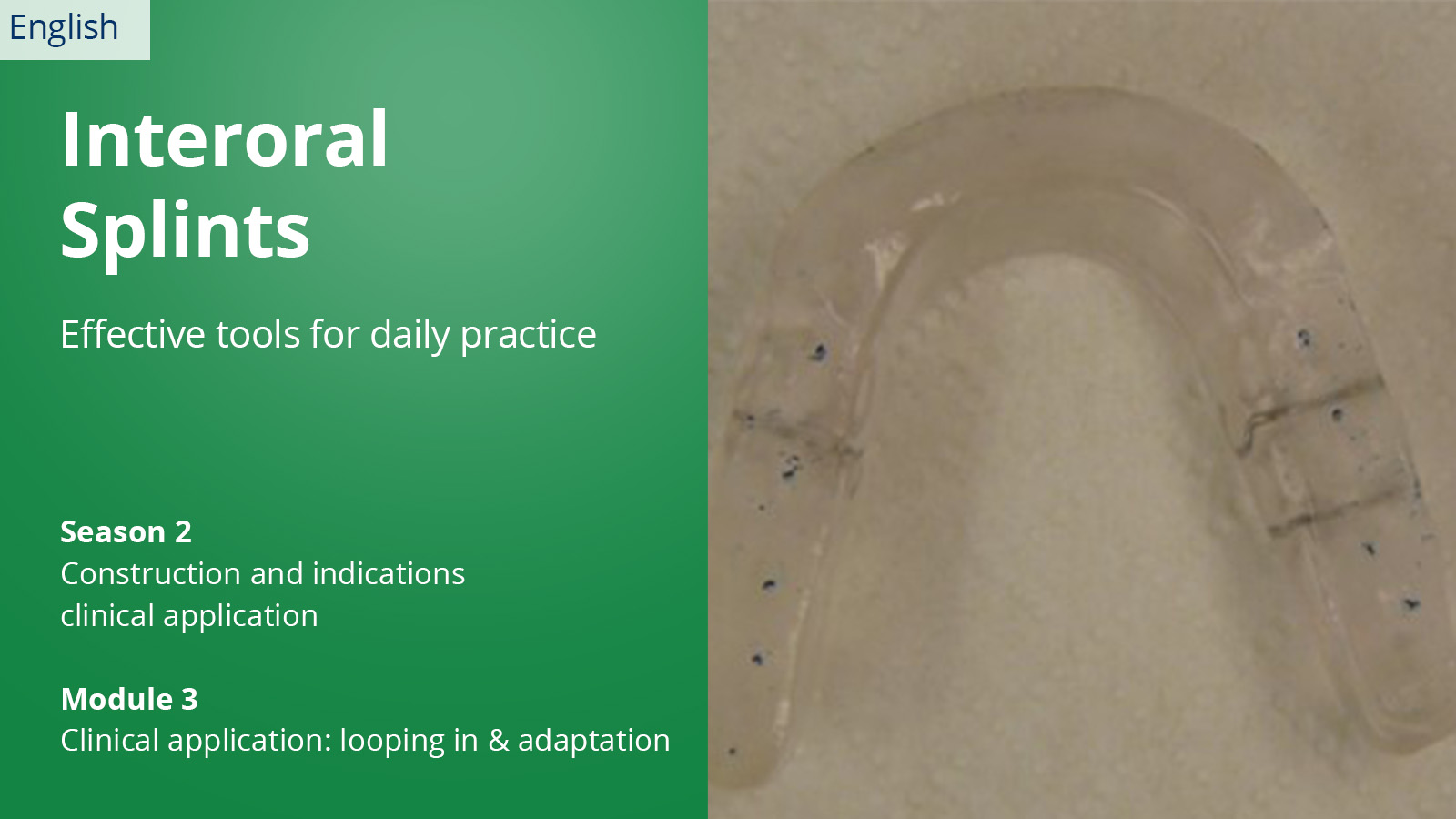
n this module, we examine key success factors for the clinical use of intraoral splints: the individuality of each splint, the targeted adaptation and grinding in of a splint, and the mandatory follow-up and therapy monitoring.


